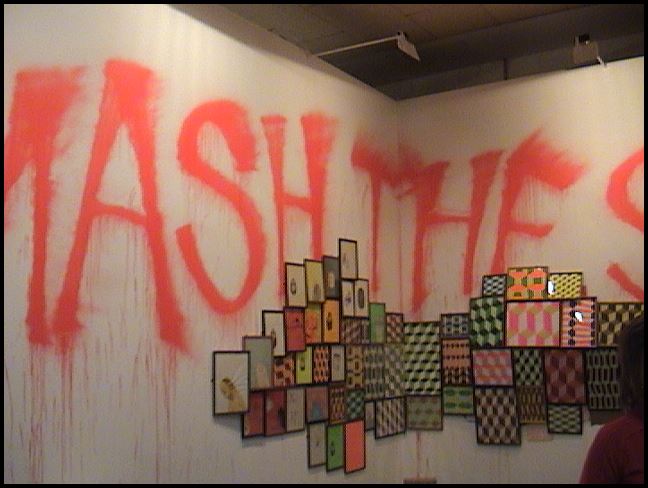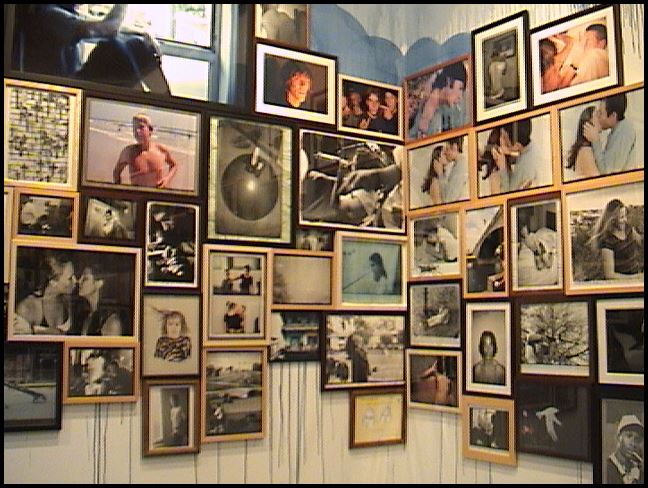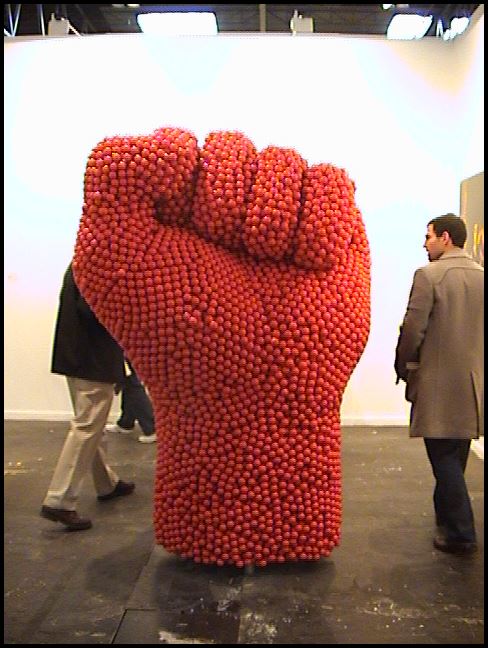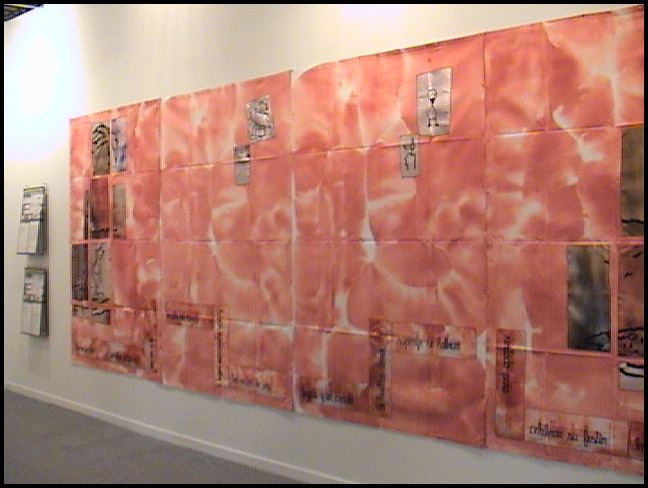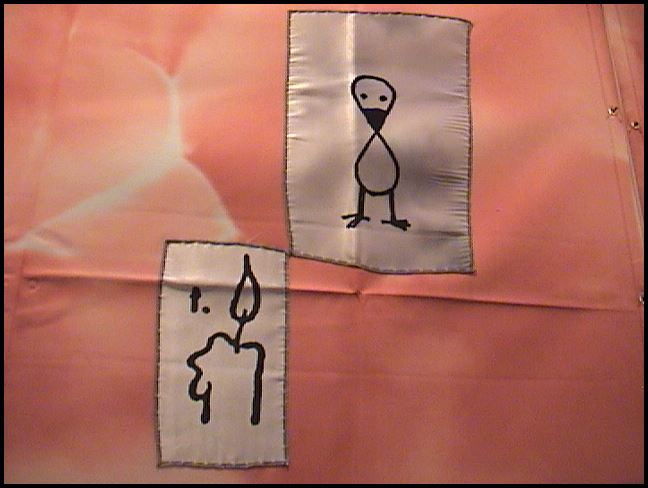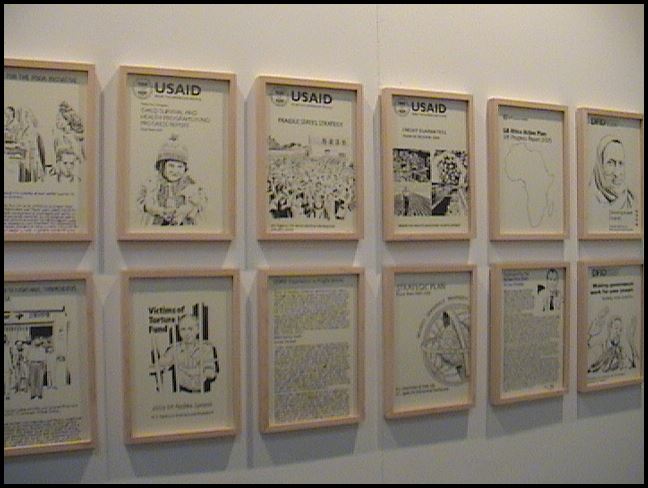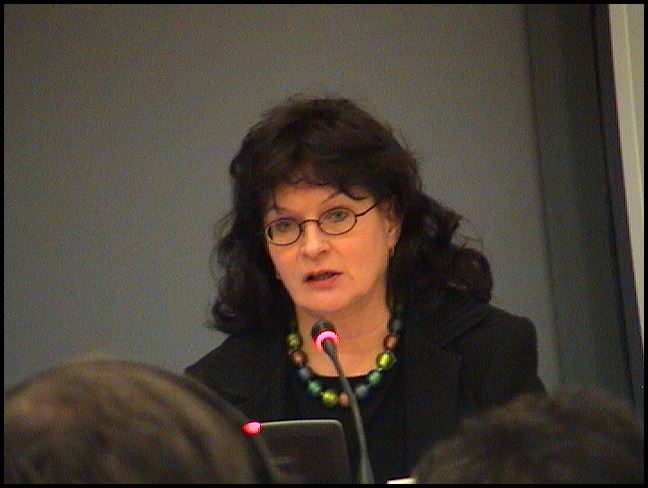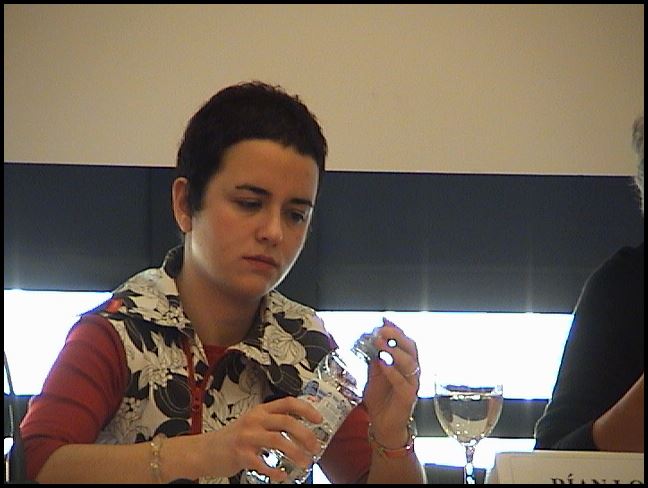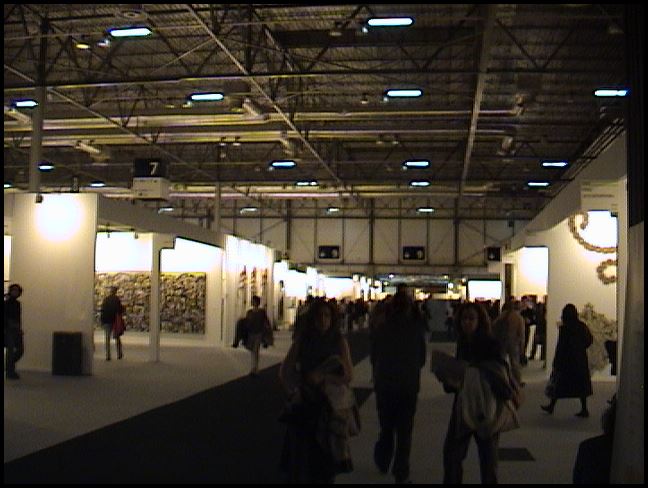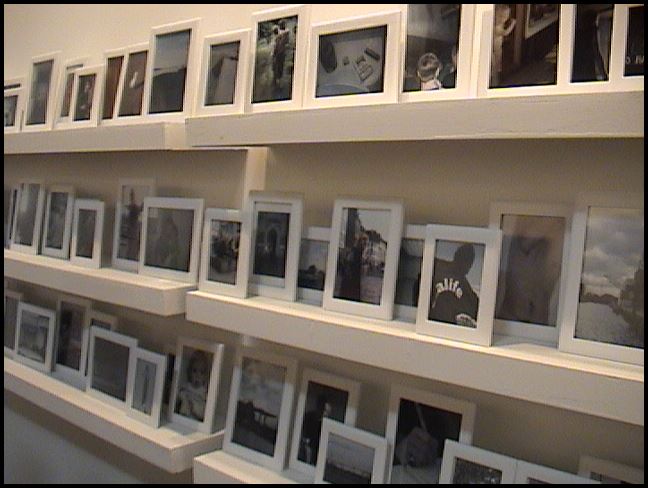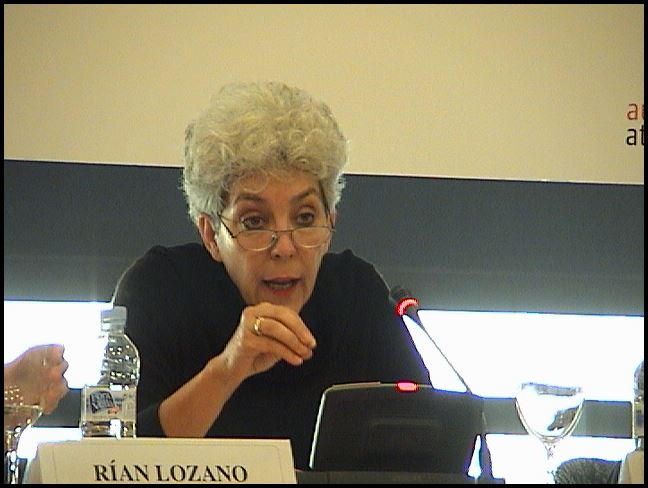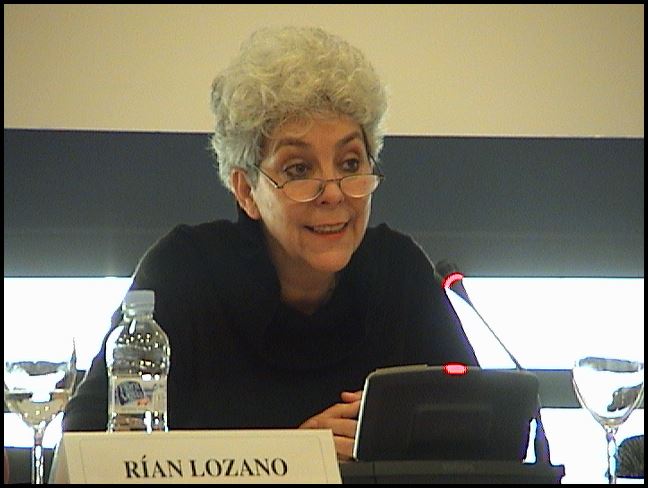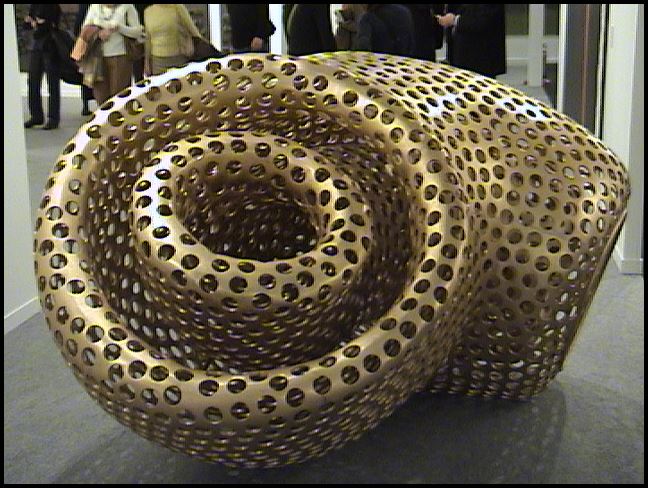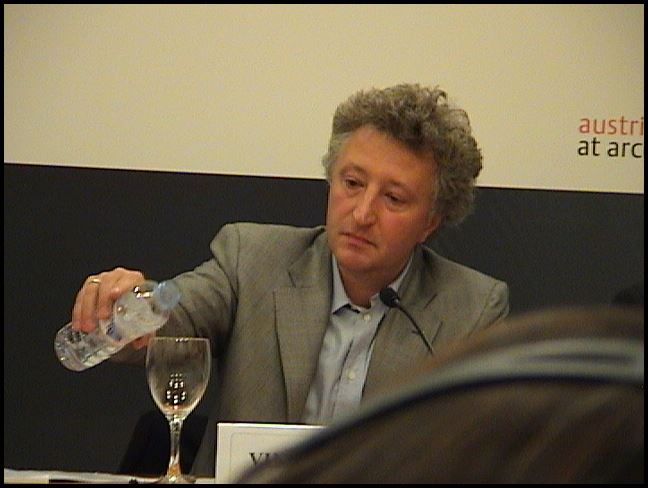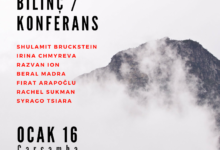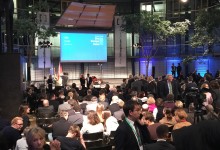ARCO MADRID 2006
COUNTER-CRITICISM
CRITICAL IMAGES!
Counter-criticism means:
A contrary, opposite position
An opposing, or retaliatory, offensive position
A complementary corresponding position
A duplicate substitute position
Counter-criticism can have different point of references that can synchronize for an ambiguous whole.
Currently and generally art-making, artworks and constructed images are similar; they have this particular character and content of counter-criticism.
They reflect an ambiguous whole of opposite/offensive and complementary/substitute position.
They are contrary and offensive, yet also complementary and substitutive for the representation and metaphors of real life, for the realities and global events.
History and art history is quite crammed full with “ciritical images” that have created political, social and cultural catastrophe.
Most of these art works have been vandalized or protested and were put on trial. The people all over the world are very sensitive when it comes to the religion. However, artists keep on tackling with these images. The freedom of expression and the freedom of belief are against each other!
The effects of the caricature of Mohammed is the latest image hysteria. On the surface the debate is about, censorship, freedom of expression and freedom of belief. On the background there is a deep epistemological and ontological difference. In Istanbul, art critic and journalist Evrim Altug made a research and published an article about two art images related to Prophet Mohammed: One of them is dated 1952 and supposed to be the first attempt to portrait the prophet within modernist canon. This painting by the expressionist painter Hamit Görele was never exhibited, but published in an art journal. It is very reminiscent of expressionist Christ portraits.
The other image is conceptual. Nedko Solakov, has removed all left over material of Deniz apartment, one of the main venues of the 9th Istanbul Biennale to one of the rooms in the manner of Beuys and revived the memories in other rooms with his wall texts and drawings. On one of the walls he found out that a Picture of Mohammed was hanging. He wrote his comment: A disguised Mohammed Portrait:He was a really nice looking prophet. A sensitive and experienced artists knows how to deal with the taboos…
Within todays global political and cultural context, these kind of perilous images have the power to create a hysteria and “clash of civilisations”.
Lately, I was also most concerned with the representation of “the other” in contemporary art context. Because the constructed images of “the other” in artworks vibrate with this kind of counter-critical ambiguity.
Consequently, within this post-media popular image context we are living in, the most popular the other image of the last decade is: the veiled/covered woman.
I will make a comparison: The digital 2005 example of Gustave Courbet’s “L’origine du monde” (1866) has been exhibitied on the billboards in Austria as one of the selected works of a 1 million EURO Project. Evidently meaning “L’origine d’Europe” this digital phototgraphy seduces the gaze of the viewer to the genitals of a woman. The genitals are covered with the EU flag.
I would like to juxtapose this image to another one, which became the most popular image of the 9th Istanbul Biennale, produced by a young Turkish artist, Burak Delier. A veiled woman with a chador made of EU flag. This was produced as a poster; a week later, it was all over Europe.
I think these images are not different; they are the same; both indicate to the perverted gender culture of our time. The artists of the East and the West are on the same channel of image-making; the “poster-image” structure is evident; they cannot handle the schock-image rationale of journalism and advertisement.
Artists are employing these extreme images in order to tackle with the unbearable impertinence of the electronic images; yet the message they reflect is ambiguous and judgmental.
The bilboards were quickly removed, but the image of the veiled woman has been freely shown everywhere in EU. I would like to illustrate this as a double standard.
Within this channel the women is always “the other” and recharged resource.
Within this channel the veiled woman is “the abject other”.
It is obvious that there is no society in this world which can overcome the male-gaze hegemony as well as religious discrimination.
We all know about the fate or the power of the representation of women as the constructed image in media, advertisement, and entertainment and consumption culture and its critic within the feminist theory. For example, in the last Venice Biennale, Roza Martinez attempted to revive it in its best advantage. Yet we also know that, although new female perspectives, as equal components of post-modern welfare societies have appeared in the last three decades, the women is still being identified within the global patriarchal framework.
There are different ways of bringing this veiled image into play or exploiting it.
•Employing images of veiled women from the media to make a narration or metaphor
•Wearing chador or hijab and making performance
•Wearing headscarf in different models which implicates the veil and its derivatives
•Documenting or interviewing veiled women
One can also classify the concept, the idea or reason behind these art works:
•Political comment/statement on the issue of veiled women i.e. on the patriarchal society and its derivatives – violence, abuse and exploitation of women…
•Solidarity or empathy with veiled women
•Psychoanalytic approach to the problem of the veil, of the body politics
• Exploitation of the stereotype, of a popular or attractive image
From a more critical angle, this image of veiled women as a “counter-critical image” is being mainly adapted by artists of the Islamic world, whether they live in their native countries or elsewhere, whether they practice their religion or they are atheists.
The women artists of the Islamic world are behaving and producing within the context of the international art making and art system; therefore it is relevant that they embrace feminism and jouissance, in which woman tries to invalidate the psychoanalytic proposition that she is dark sphere and undechipherable.
By the repetition and the exploitation of the veiled image they believe to achieve the same effect the abject image – as reflected in the works of artists from Meret Oppenheim to Ana Mendiata, from Louise Bourgeois to Cindy Sherman, from Gina Pane to Sanja Ivekovic – is having in Western art. It is generated as a method of re-visualizing the gender relations, as well as providing critical approach to the ever-present forms of exclusion.
Evidently this focus on the burdens of the women in the Islamic world can reveal much about our common cultural anxieties and allows us to confront the power constructions of the absolute man oriented societies. However, we must not forget that the publics of those societies are not able to view these works. These works are produced for the societies where there is democracy, equality and human rights for women.
On the other hand, while the veiled woman is condemned to look into the world through her veil, like a voyeur – somehow she is also protected from this world through her chador – the artist is displaying the veiled women to the world of contemporary art as an unprotected object of curiosity.
Since the veiled woman became the emblematic figure of fundamentalism, the gaze (in this case the artist- no matter from which culture) procured the role of a “cultural screen” for Western audiences and framed or organised what they wanted to see.
The veiled woman is subject to gaze, but is not able to apprehend herself through this “cultural screen”. This is a “failed encounter”.
(quoted from: Joan Copjec, Imagine There is no Woman,The Mit Press, 2002,p. 207…).
Copjecs’s ideas explaines this situation better: There is no reciprocity between the observing subject and the Other of the gaze whereby each could come to recognise the other. She says : On this point Sartre is clear: The Other (of the gaze) is inapprehensible; he flees me when I seek him and posseses me when I flee him.(Being and Nothingness, 529)
I will conclude with two reverse action pieces, where a woman uncovers herself.
Sanja Ivekovic’s video “Personal Cuts”, which shows a woman cutting holes into a black stocking which covers her head and face. Each cut is followed by a sequence of a documentation of Yugoslav history.
At the end the face is completely uncovered.
Şeyda Cesur’s photography series of a 30 day scanning of her naked body.
In order to have an “accomplished encounter” these performance should be shown in the Islamic countries.
Beral Madra, February 2006

